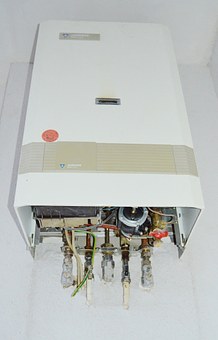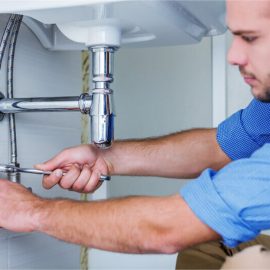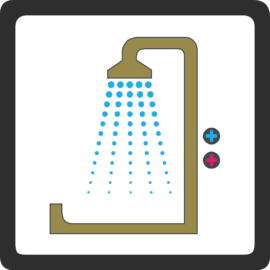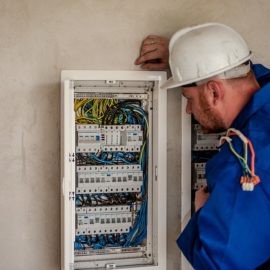
Summary
– Step 1: Turn off the power source
– Step 2: Prepare to drain the water heater
– Step 3: Bleed the tank
– If the water does not flow to drain a water heater
– Step 4: Fill the tank
When you run out of hot water, or when hot water is a little too slow to come on, it may be time to drain your electric water heater to remove the sediment that eventually builds up at the bottom of the tank.
You can drain the water heater at any time of the year, especially if you have just moved in and have never drained it before.
It is also recommended that the water heater be drained if there are possible periods of freezing temperatures when the unit is unoccupied to prevent damage to the piping and tank.
Draining an electric water heater ensures that it is in good working order and saves on the energy bill. This operation is possible in a few simple steps as described below.
Good to know: it is not useful to completely drain your electric water heater if there is no risk of freezing when the house is not occupied. In this case, close the shut-off valve on the safety group and turn off the power.
There are two common types of water heaters:
– Electric water heaters or electric storage water heaters.
– Gas water heaters or gas hot water storage heaters.
This post deals only with the draining of an electric water heater.
Equipment needed to drain a water heater
| Rag | Free |
| Multi-socket pliers | Starting from $2. |
| Bucket | Starting from $1. |
| Garden hose | From 5 $/25 m |
1. Turn off the power source
There are several possible solutions for draining your water heater:
– Set the main circuit breaker to “off.”
– Remove the fuse corresponding to the electric water heater.
Caution: When working on electricity, keep children and pets away.
– Make sure your hands are dry and work in a safe place.
2. Preparing to drain the water heater

– Turn off the cold water supply to the water heater. The shut-off valve is located on the cold water line to your electric water heater.
– Open the hot water taps in your home.
3. Drain the tank
If you have a siphon, there is no need to use a garden hose or other basin; open the drain valve on the water heater, and the water will drain into the siphon and go down the drain.
If the drain valve is too low for direct discharge into a large pail or basin (provide two) :
– Attach a garden hose to the drain valve.
– Place the hose in a sink or other drain.
– Open the drain valve on your tank, watching for splashes; the water coming out is very hot.
– Let the water drain completely from your tank; be patient.
If possible, when the water stops flowing, tilt your tank slightly towards the drain valve, without forcing, to evacuate as much water as possible.
Note: The tank drain valve is usually located at the base of your water heater. Please refer to the technical data sheet of your water heater for its exact location.
If the water does not drain out of a water heater
Especially on older electric water heaters, there may be little or no water flow. Don’t panic; there is a solution: loosen the hot water inlet slightly to create a draft and make draining easier.
If this is not enough :
– Close the drain valve.
– Turn off the general water supply to the house.
– Unscrew the cold water inlet fitting from the water heater and attach the garden hose to the tank.
– Unscrew the hot water inlet fitting to draw in air.
– Allow the tank to drain before reassembling and refilling the tank (Step 4).
4. Fill the tank
– Close the drain valve.
– Remove the garden hose.
– Turn on the cold water supply tap.
– Let the tank fill: The tank is full when water comes out of the hot water faucets you left open.
– Turn off the hot water faucets.
– Wipe your hot water tank with a cloth.
– Turn the power back on at the main breaker or replace the fuse on the electric water heater.
That’s it. You are now done with draining your electric water heater. Please, remember to share your comments in the section below.




Pingback:Hot Water Heating System: What Is a Differential Pressure Valve - Plumbers services
Pingback:Hot Water System: What Is a Pressure Relief Valve? - Plumbers services
Pingback:How to Change the Anode in a Water Heater - Plumbers services